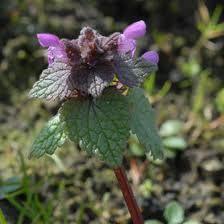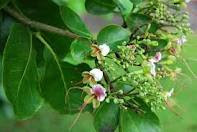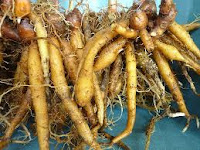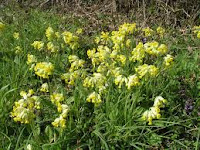Like the white deadnettle, this purple one is not related to the common stinging nettle and the Uriotica family of nettles. The two dead nettles are closely related however and were once known as Archangels along with the yellow deadnettle. The purple dead nettle is a member of the Lamiaceae or Labiatae or mint family making it a relative of marjoram, basil, Holy basil, oregano, savory, thyme, marsh woundwort, lavender, lemon balm, as well as bugle, motherwort, self-heal, catnip, the chaste tree, ground ivy, Jupiter’s sage, wall germander, Fragrant premna and hyssop, among many others.
 The plant has edible leaves and flowers and these may be picked when the plant is blooming and dried for later use. The leaves are, more or less, available all year round, which is good if you happen to cut yourself near a plant, as the leaves, bruised and placed on wounds will help to staunch the bleeding. The leaves mat be used in salads and used to flavour soups, stews and sauces, providing vitamin C, iron and fibre, among other minerals and flavonoids.
The plant has edible leaves and flowers and these may be picked when the plant is blooming and dried for later use. The leaves are, more or less, available all year round, which is good if you happen to cut yourself near a plant, as the leaves, bruised and placed on wounds will help to staunch the bleeding. The leaves mat be used in salads and used to flavour soups, stews and sauces, providing vitamin C, iron and fibre, among other minerals and flavonoids. A tisane can be made with the flowering tops of the herb, with 2 tablespoons of them, chopped, and a pint of boiling water poured over them. Leaves this to steep for about ten minutes and then strain and drink a half a cup at a time. This remedy was traditionally used for kidneys and as a laxative- be warned! You may want to flavour it with a little honey.
A tisane can be made with the flowering tops of the herb, with 2 tablespoons of them, chopped, and a pint of boiling water poured over them. Leaves this to steep for about ten minutes and then strain and drink a half a cup at a time. This remedy was traditionally used for kidneys and as a laxative- be warned! You may want to flavour it with a little honey. A decoction of the whole plant, or at least the aerial parts was once given for haemorrhages of all kinds, although Nicholas Culpeper writing in the 17th century species that the red dead nettle was especially good for women with menstrual problems.
 Because this plant is a kind of red colour, the ancient herbalists believed it was good for the blood as they thought that like cured like. The plant is quite common now in
Because this plant is a kind of red colour, the ancient herbalists believed it was good for the blood as they thought that like cured like. The plant is quite common now in The purple dead nettle is also called the red nettle, the red dead nettle and the red Archangel , as these dead nettles were thought to bloom on the Archangel Michaels day which was May 8th in the Julian calendar. In our calendar that would be 28th April. This particular one has diuretic, and sweat promoting properties, is a styptic, so helps wounds heal, is astringent and a tonic. It has been found to have antioxidant properties as well as antifungal and antimicrobial ones. It is also anti-allergen and can help protect allergy sufferers from secondary infections of the throat and bronchi.
 The flavonoids quercetin and the vitamin C contained in the herb also mean that it boosts the immune system and helps fight infection. It has been shown to be effective against the E. coli bacteria and others “Antimicrobial and Free Radical Scavenging of Some Lamium Species from Turkey” Funda Nuraly Yalçin et al. 2007 and its anti-inflammatory properties were documented in “In vivo Anti-inflammatory and Atinociceptive Actions of Some Lamium Species” Akkol E.K. et al, Journal of Ethnopharmacology 2008.
The flavonoids quercetin and the vitamin C contained in the herb also mean that it boosts the immune system and helps fight infection. It has been shown to be effective against the E. coli bacteria and others “Antimicrobial and Free Radical Scavenging of Some Lamium Species from Turkey” Funda Nuraly Yalçin et al. 2007 and its anti-inflammatory properties were documented in “In vivo Anti-inflammatory and Atinociceptive Actions of Some Lamium Species” Akkol E.K. et al, Journal of Ethnopharmacology 2008.Nicholas Culpeper writing in his 17th century herbal, grouped the dead nettles together and had this to say of them:-
 “Virtues and use. The archangels are somewhat hot and drier than the stinging nettles, and used with better success for the stopping and hardness of the spleen than they, by using the decoction of the herb in wine, and afterwards applying the herb hot into the region of the spleen as a plaister, or the decoction with spunges. Flowers of the white archangel are preserved or conserved to be used to stay the whites, and the flowers of the red to stay the reds in women. It makes the head merry, drives away melancholy, quickens the spirits, is good against quartan agues, stancheth bleeding at mouth and nose, if it be stamped and applied to the nape of the neck; the herb also bruised, and with some salt and vinegar, and hog-grease, laid upon an hard tumour or swelling, or that vulgarly called the king's evil, do help to dissolve or discuss them; and being in like manner applied, doth much allay the pains, and give ease to the gout, sciatica, and other pains of the joints and sinews. It is also very effectual to heal green wounds, and old ulcers; also to stay their fretting, gnawing and spreading. It draweth forth splinters, and such like things gotten into the flesh, and is very good against bruises and burnings. But the yellow archangel is most commended for old, filthy, corrupt sores and ulcers, yea, although they grow to be hollow, and to dissolve tumours.”
“Virtues and use. The archangels are somewhat hot and drier than the stinging nettles, and used with better success for the stopping and hardness of the spleen than they, by using the decoction of the herb in wine, and afterwards applying the herb hot into the region of the spleen as a plaister, or the decoction with spunges. Flowers of the white archangel are preserved or conserved to be used to stay the whites, and the flowers of the red to stay the reds in women. It makes the head merry, drives away melancholy, quickens the spirits, is good against quartan agues, stancheth bleeding at mouth and nose, if it be stamped and applied to the nape of the neck; the herb also bruised, and with some salt and vinegar, and hog-grease, laid upon an hard tumour or swelling, or that vulgarly called the king's evil, do help to dissolve or discuss them; and being in like manner applied, doth much allay the pains, and give ease to the gout, sciatica, and other pains of the joints and sinews. It is also very effectual to heal green wounds, and old ulcers; also to stay their fretting, gnawing and spreading. It draweth forth splinters, and such like things gotten into the flesh, and is very good against bruises and burnings. But the yellow archangel is most commended for old, filthy, corrupt sores and ulcers, yea, although they grow to be hollow, and to dissolve tumours.” He implies that generally all the dead nettles have the same properties, although this is not actually the case we now know.

















































